Measles debate has reached fever pitch in the United States after an outbreak that began in December at Disneyland in southern California. Many media outlets and politicians have focused on the country’s growing anti-vaccination movement. However, the bigger problem lies elsewhere. The United States was declared free of measles in 2000, and all outbreaks since then have been sparked by imported cases, which will continue to occur until measles is eradicated worldwide.
The World Health Organization (WHO) has set targets for 2015, but progress towards them has been slow (see ‘Targets in trouble’). After the Measles & Rubella Initiative was founded in 2001, the number of cases and deaths fell. But progress against the disease started to stall in 2007 (see ‘A fall … then a stall’) and vaccination coverage plateaued in 2010, when funding plummeted during the global economic slowdown (see ‘Vaccination rising’). The WHO now concedes that few countries will attain anywhere near the targets.
The United States has some grounds for concern. Last year saw 644 cases in 27 states, a record high since 2000. And by 2013, the proportion of eligible children who had been vaccinated had dropped by 2% since 2004, to 91%. But the nation’s vaccination coverage remains high compared with other countries (see ‘Vaccination coverage worldwide’), and the number of cases is also small. The recent US outbreak infected 121 people. But China saw 107,000 people infected last year, and the Democratic Republic of the Congo (DRC) had 89,000 cases in 2013 (see ‘Largest outbreaks’). The proportion of people who die varies depending on where you are (see ‘Different conditions, different disease’).
The last pockets of a disease are always the hardest to eliminate, as shown by polio eradication, which has been ‘just around the corner’ for years. But if the Measles & Rubella Initiative can get vaccinations back on track worldwide, measles may yet follow smallpox, the only killer human disease yet to be wiped out in the wild.
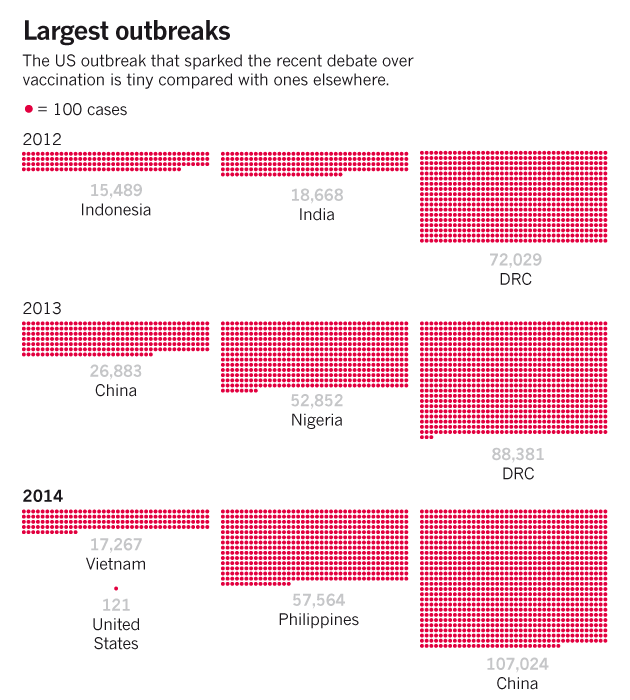
Source: WHO. Design: Jasiek Krzysztofiak/NATURE
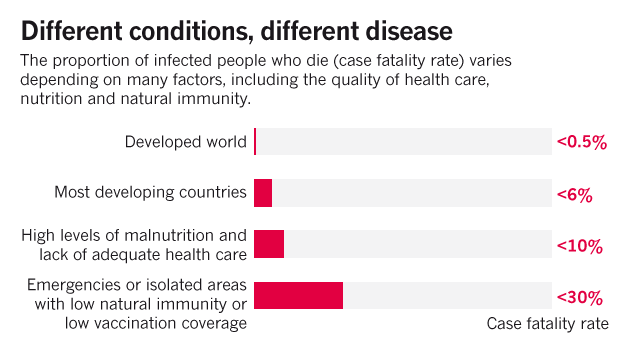
Source: WHO. Design: Jasiek Krzysztofiak/NATURE
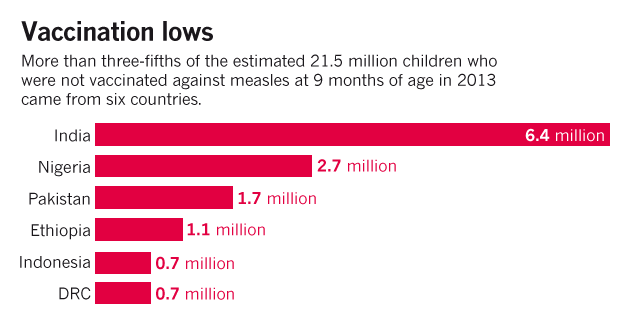
Source: WHO. Design: Jasiek Krzysztofiak/NATURE
- Journal name:
- Nature
- Volume:
- 518,
- Pages:
- 148–149
- Date published:
- ()
- DOI:
- doi:10.1038/518148a
- See Editorial page 137
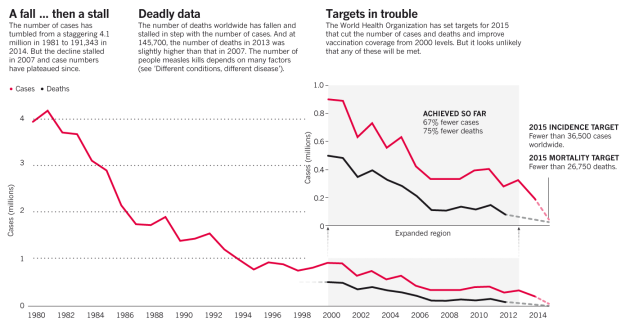
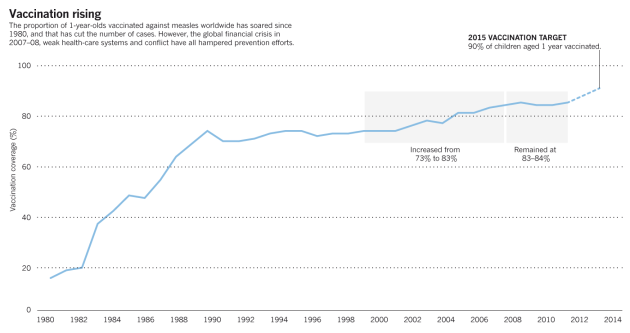
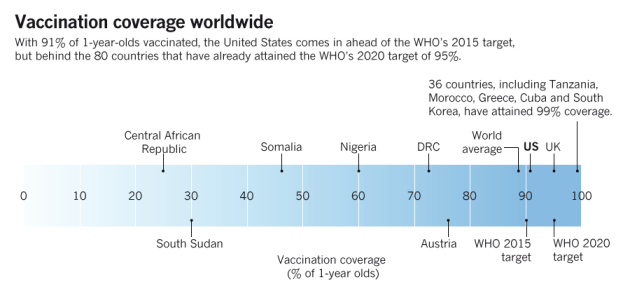
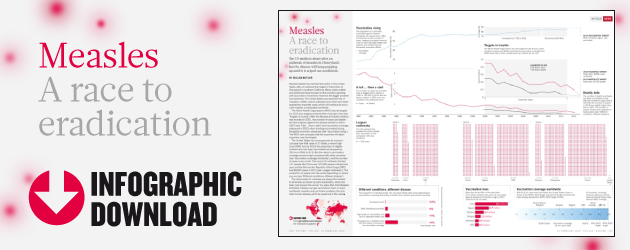


Comments for this thread are now closed.